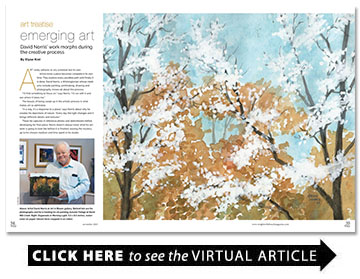Emerging Art
David Norris’ work morphs during the creative process
BY Elyse Kiel
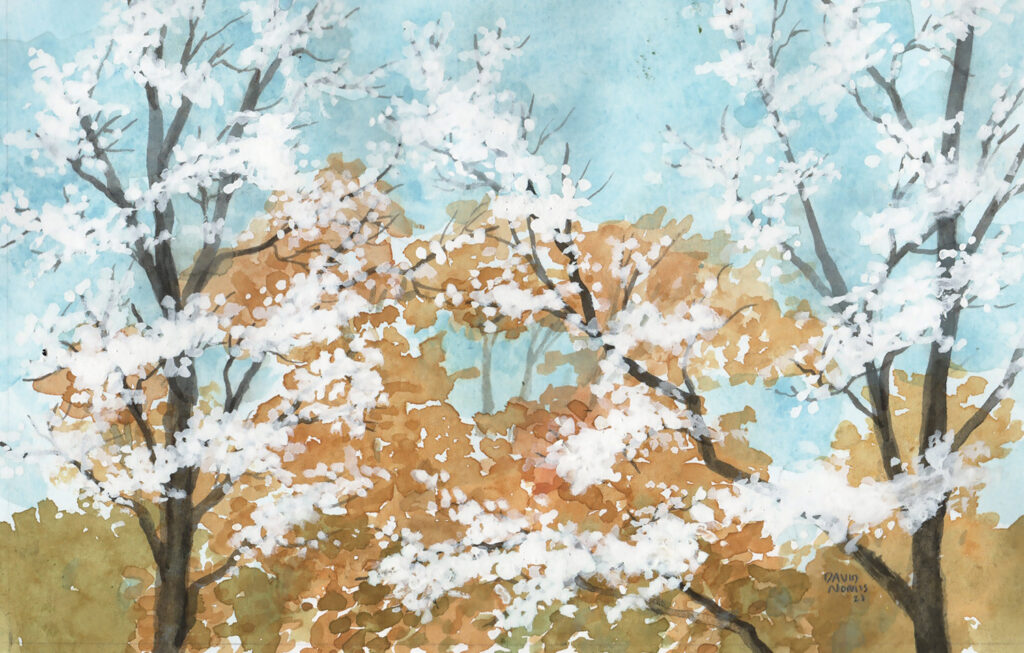
Art rarely adheres to any schedule but its own.
Artists know a piece becomes complete in its own time. They explore every possible path until finally it is done. David Norris, a Wilmingtonian whose mediums include painting, printmaking, drawing and photography, knows all about this process.
“I’ll find something to focus on,” says Norris. “I’ll run with it and see where it takes me.”
The beauty of being swept up in the artistic process is what makes art so admirable.
“In a way, it’s a response to a place,” says Norris about why he creates his depictions of nature. “Every day the light changes and it brings different details and textures.”
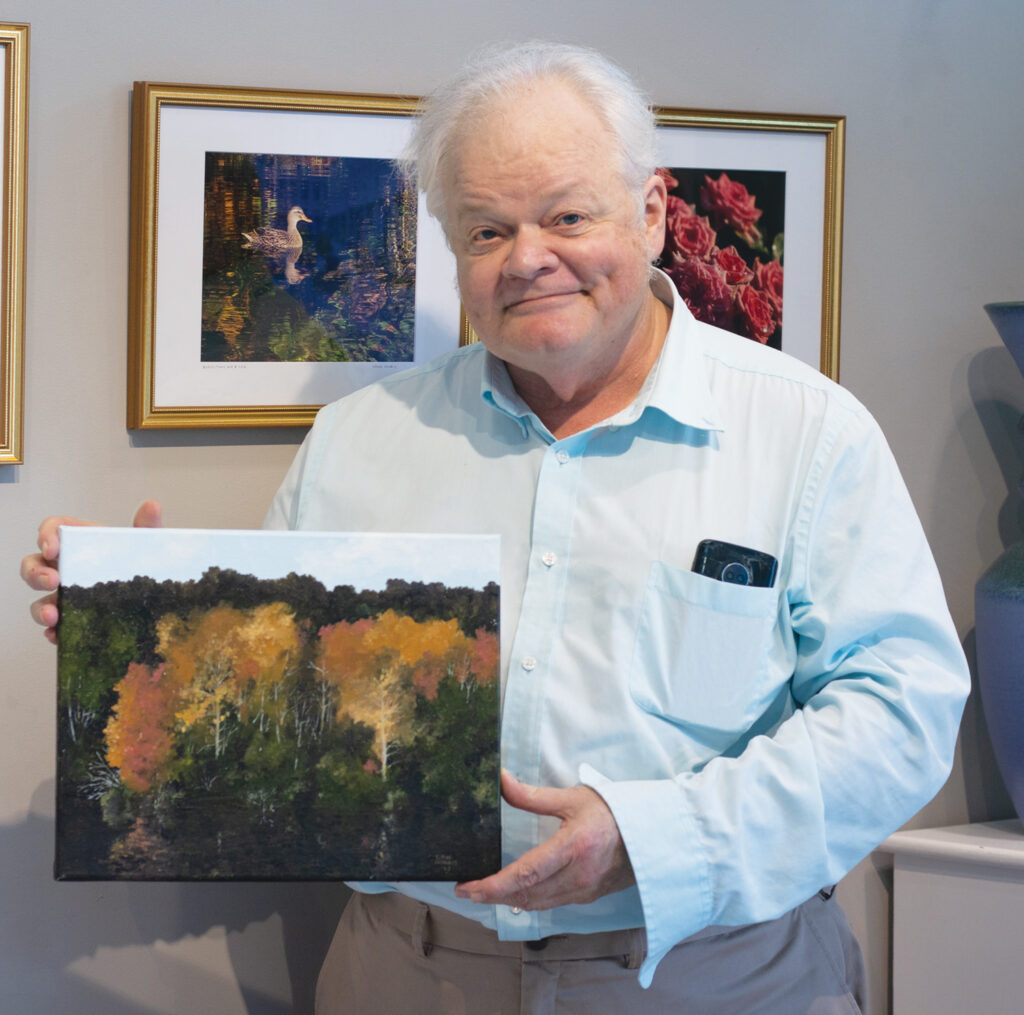
These he captures in reference photos and sketchbooks before developing his final piece. Norris doesn’t always know what his artwork is going to look like before it is finished, leaving the mystery up to his chosen medium and time spent in his studio.
Even though he is the one creating the art, Norris is “open to change and surprises” when he is working, allowing the piece to take on a life of its own.
“I have an idea to get me started, but it’s kind of exciting to see what it’s going to look like,” he says.
Norris began taking walks in March of 2020 during the start of the COVID-19 pandemic. He would see more animals than people during those days, which is a common theme in his work. He would learn about the birds and wildlife in his neighborhood, exploring the details of the natural world and desiring to recreate the beauty he saw in the environment.
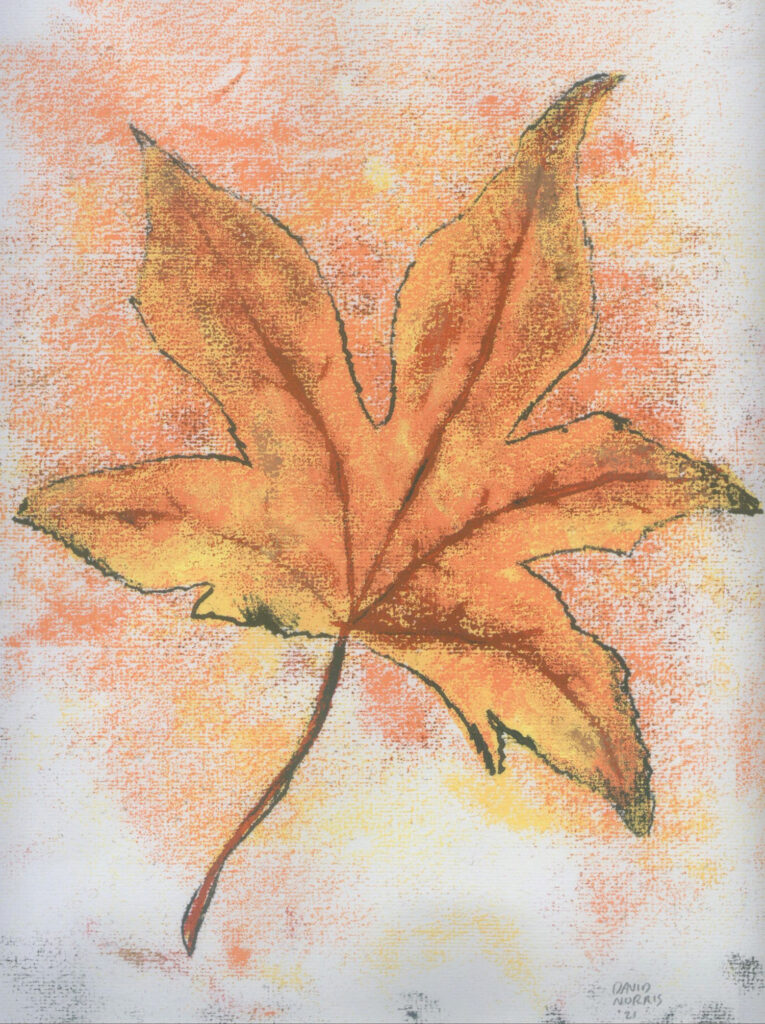

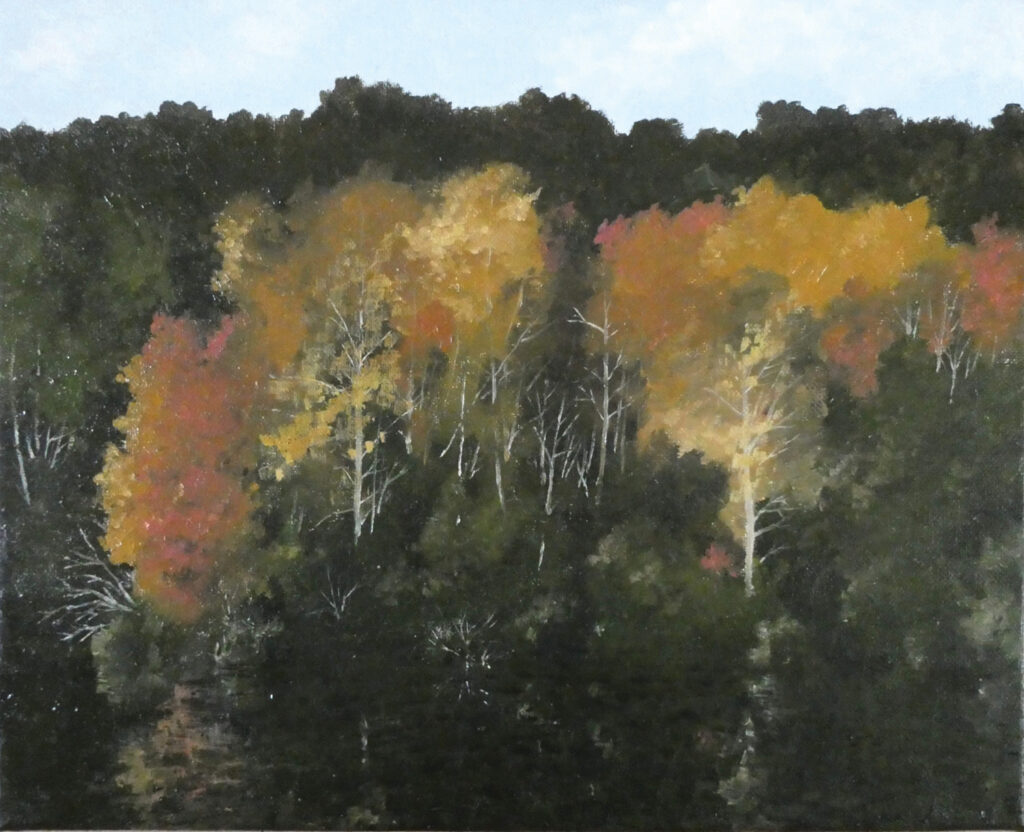
Autumn is another common theme in Norris’s works; he explores the clear air, brighter colors, and the cycle of life. In his painting Autumn Foliage at Burnt Mill Creek he depicts the graceful changing of colors on the trees. He embarked on a walk and took reference photos, appreciating the pop of colors in the layers of trees and the start of fall peeking through the curtains of summer.
“It was one of those moments. You don’t know what you’re going to see,” says Norris.
Norris also draws inspiration from Rembrandt’s works from the Netherlands in the 1600s. Rembrandt’s landscapes can be compared to eastern North Carolina with his depictions of sand dunes, wetlands and river estuaries.
He learned about drawing, specifically hatching and negative space, from 18th century engraving books as well as Vincent van Gogh’s reed drawings inspired by Japanese print work. From drawing airplanes in his childhood, Norris began exploring watercolor and oil paintings in addition to monoprinting as he grew older and graduated from East Carolina University in 1980, with a BFA.
Norris majored in print making, minoring in drawing and art history. He says he developed his naturalistic style during his years at school while surrounded by a community of young artists.
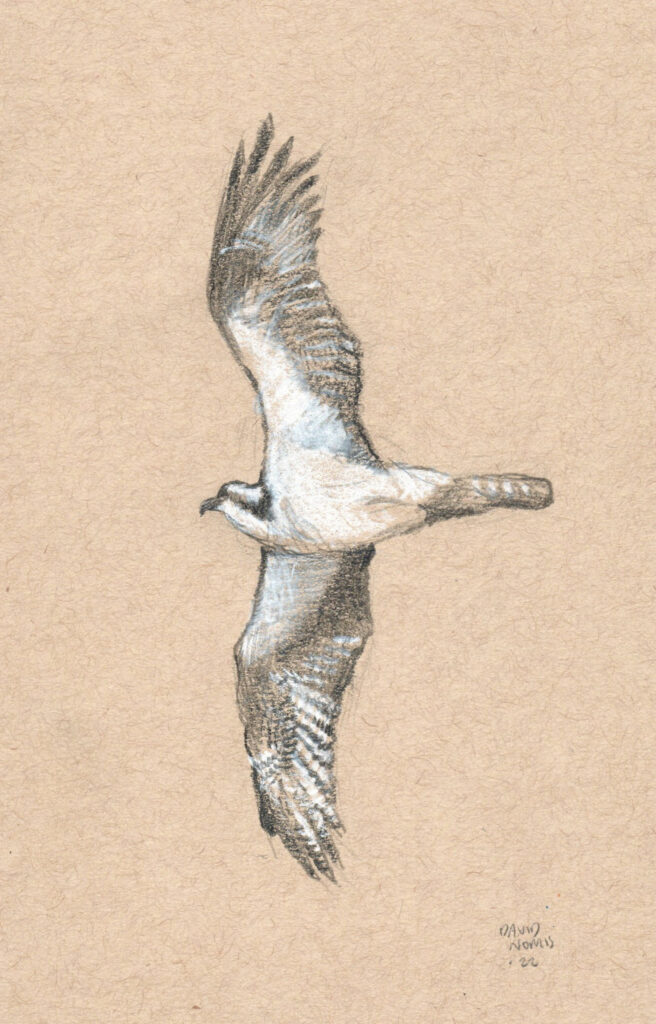
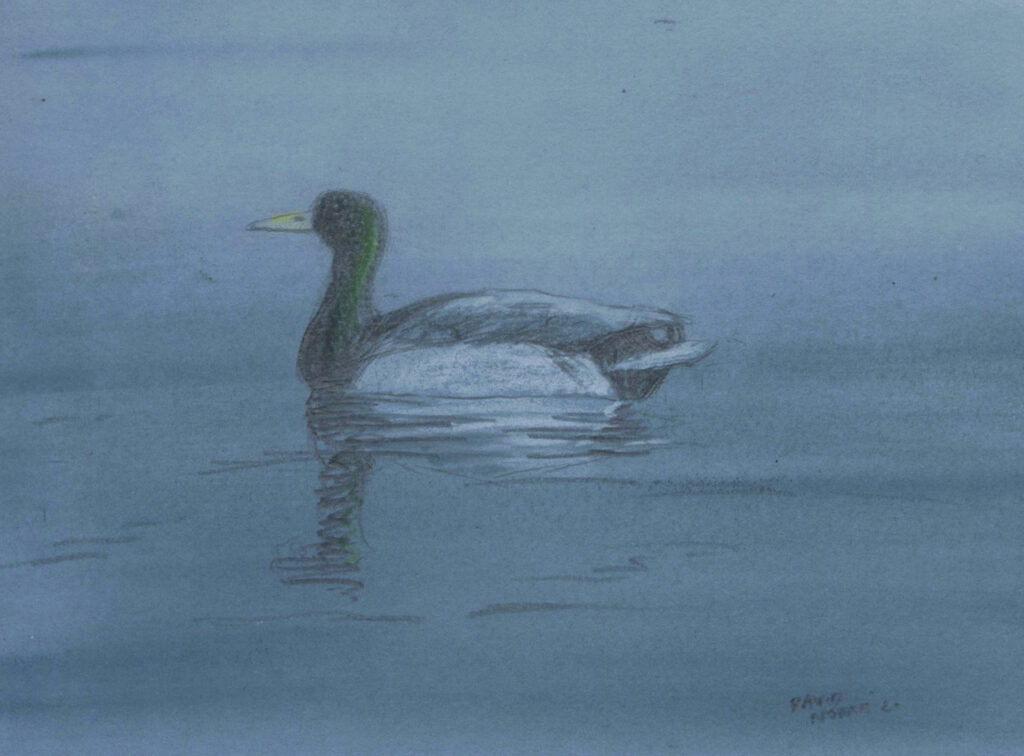
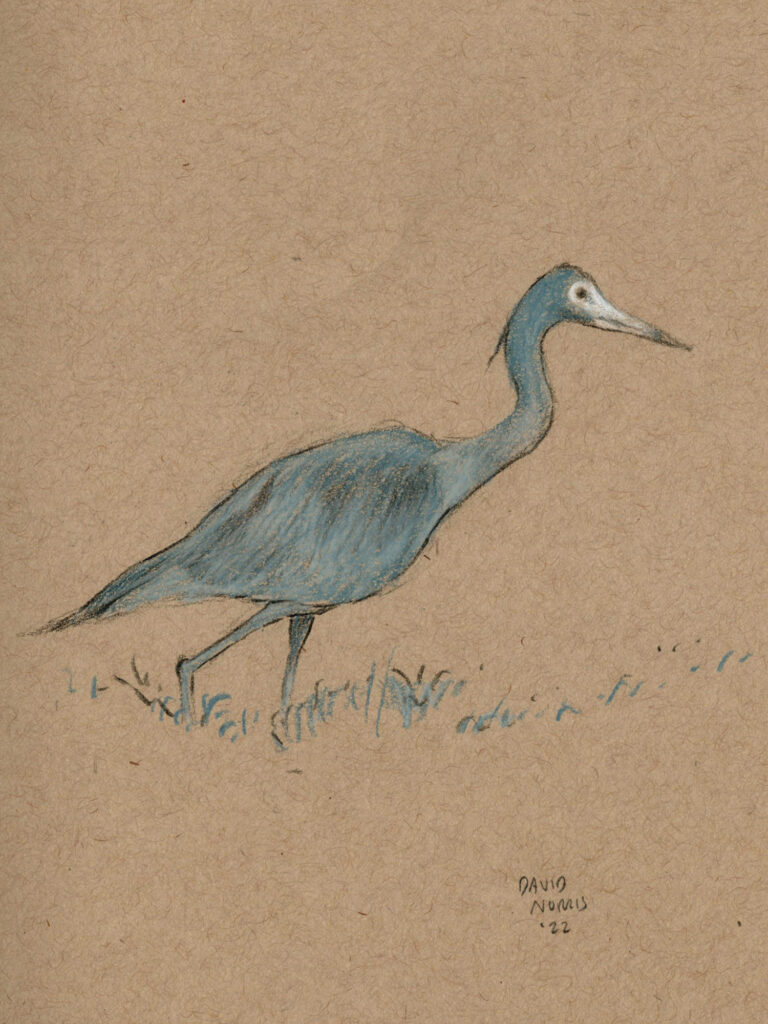
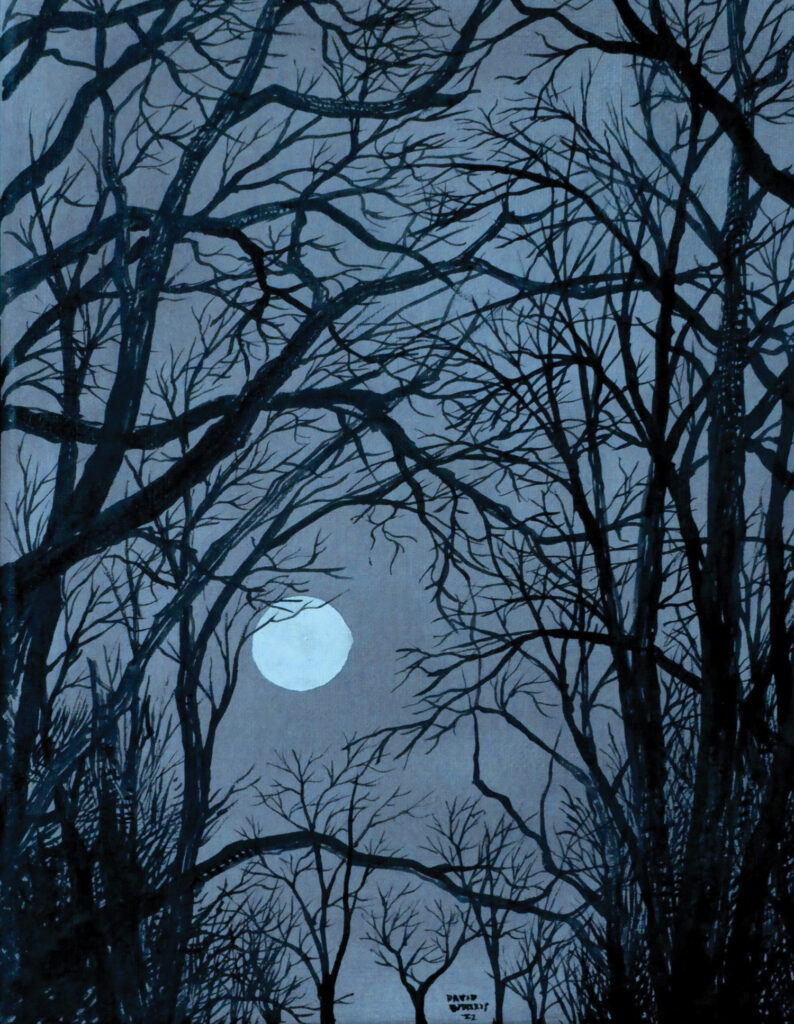
“We would see what one another was doing and learn and share our work,” he says. “That’s something nice about Wilmington. You get to know a lot of artists and see their work and talk about it.”
Getting accepted into East Carolina University and being a part of the community at Art in Bloom Gallery have been some of the proudest moments of his career.
He is also appreciative of the fact he has stuck with creating art throughout his life.
Norris gives advice to new artists embarking on their own careers.
“Look at as much artwork as you can, all kinds of artwork from different people and time periods,” he says.
Experiencing a wide variety of artwork can be inspirational, perhaps even a challenge to one’s skills and perspectives.
“It is important to believe in yourself. It is really easy to get discouraged and stop. You have to make yourself keep going,” says Norris. “Work on a drawing or painting every day. If you make a mark on paper every single day it will keep you anchored in your work.”
